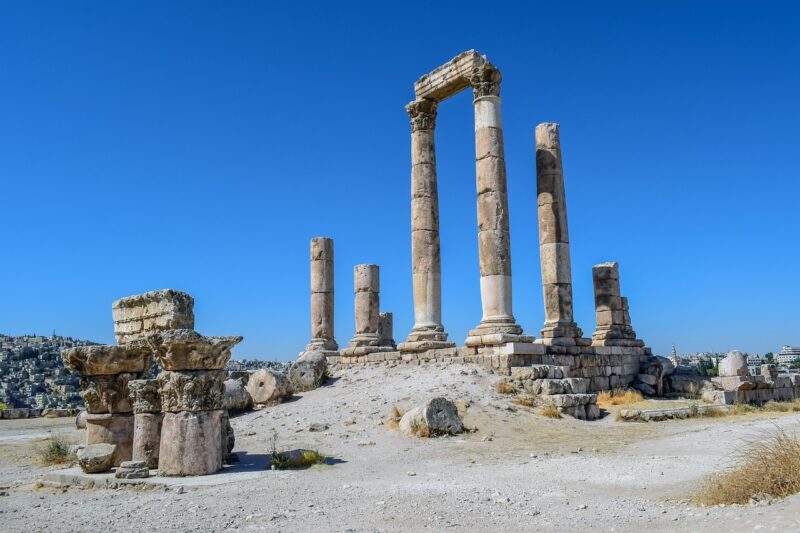The Fascinating Connection Between Numbers, Geometry, and Mysticism in Ancient Cultures
November 17, 2024

Throughout history, numbers and geometry have held a significant place in the belief systems and practices of various ancient cultures. The intertwining of mathematics with mysticism and spirituality has shaped not only religious views but also the architectural marvels that have withstood the test of time. In this article, we’ll delve deep into the connection between numbers, geometry, and mysticism as it pertains to ancient civilizations, exploring how these elements were more than just tools of mathematics; they were keys to understanding the universe.
1. Numbers as Symbols of Spiritual Meaning
Numbers have long been imbued with symbolic meaning across different cultures. In ancient civilizations, numbers were often regarded not just as quantities but as metaphysical symbols that conveyed deeper spiritual truths.
For example, the number three has considerable significance in various cultures, representing unity and wholeness. In Christianity, it symbolizes the Holy Trinity, while in many pagan traditions, it reflects the triad of life, death, and rebirth. Similarly, the number seven frequently appears in different traditions, representing perfection and completeness — consider the seven days of creation in the Book of Genesis or the seven wonders of the ancient world.
2. Geometry as a Language of the Cosmos
Geometry has often been viewed as the language of the cosmos, helping civilizations comprehend and represent the universe around them. Ancient Greeks, particularly Pythagorean scholars, believed that understanding geometric ratios allowed one to tap into the divine harmony of the world. They viewed geometric shapes not only as mathematical constructs but also as essential metaphysical truths.
The Pythagorean theorem, for instance, reveals the profound relationship between angles and lengths in triangles, reflective of inner spiritual truths. Meanwhile, the sacred geometry found in the designs of temples and other religious structures signifies a quest to embody the divine order in physical form. These geometric patterns are believed to embody the principles of the universe, manifesting the connection between the material and the spiritual.
3. The Role of Sacred Geometry in Different Cultures
Sacred geometry encompasses the shape of phenomena in nature—everything from the arrangement of the stars to the structure of living organisms. Various ancient cultures utilized sacred geometry as a spiritual practice.
– Egyptian Geometry: The Ancient Egyptians used geometry in constructing monumental structures such as pyramids and temples. The Great Pyramid of Giza, with its precise alignment to cardinal points and mathematical proportions, reflects a deep understanding of geometry as a means to connect with the divine.
– Indian Temples: In Hindu architecture, temples are often built using specific geometric designs known as Vastu Shastra, which aligns with cosmic principles. The square symbolizes the earth, while the circle embodies the divine, creating a harmonious balance in the temple’s design.
– Mesoamerican Civilizations: The Maya and Aztec civilizations incorporated geometric shapes into their religious practices, using shapes such as squares and circles to align their structures with celestial events and spiritual beliefs.
Through the creation of sacred geometrical designs, ancient cultures sought to convey their understanding of the universe and spirituality.
4. Numerology: The Mystical Study of Numbers
Numerology, the mystical study of numbers, has roots in various ancient cultures. Each number is thought to possess unique vibrational frequencies and inherent characteristics.
In ancient Greece, Pythagoras founded a school that explored these mystical numerical relationships, believing that numbers hold the key to understanding human existence. The numbers one through nine were attributed certain characteristics that correspond to personal attributes and destiny, shaping individuals’ paths based on their birth dates and names.
– Chinese Numerology: In Chinese culture, certain numbers are considered auspicious or inauspicious based on their phonetic similarities to other words. For instance, the number eight (八, bā) sounds like the word for wealth (发, fā), making it a popular number in business and everyday life.
– Kabbalistic Numerology: In Kabbalistic tradition, each letter in the Hebrew alphabet corresponds to a number, allowing practitioners to interpret sacred texts by deciphering the secret meanings behind the numbers.
Numerology showcases how ancient cultures perceived numbers not solely as mathematical entities but as integral components of existence intertwined with destiny and the universe’s mysteries.
5. Astrology: The Interplay of Geometry and Spirituality
Astrology is another ancient practice that closely intertwines geometry and mysticism. The positioning of celestial bodies is believed to influence life on Earth, with specific angles and distances revealing information about individual paths and personalities.
Ancient civilizations often created complex astrological charts using geometrical shapes, such as circles, to represent the cosmos. Each planet’s placement aligns with specific numerical values and geometric patterns that are analyzed for divination purposes.
Astrology illustrates the age-old belief that humans are intrinsically linked to the wider cosmos, harmonizing numerical calculations with cosmic manifestations.
6. Conclusion: The Legacy of Numbers and Geometry in Mysticism
The connection between numbers, geometry, and mysticism across ancient cultures reveals a profound understanding of the universe as a harmonious system where mathematics serves not just as a tool but as a gateway to spiritual awareness.
From the intricate design of sacred temples to the study of numerology and astrology, these elements encapsulate humanity’s quest to symbolize, understand, and connect with the cosmos. As we delve into these ancient philosophies and their applications in contemporary life, one cannot help but marvel at how deeply intertwined our understandings of numbers and spirituality remain, inviting us to explore the mysteries that still linger in the backdrop of our existence.
In conclusion, reflecting on how ancient cultures approached numbers and geometry can provide valuable insights into our own spiritual practices today, expanding our understanding of ratios, shapes, and their mystical significance. Whether through architecture, art, or numerology, the influence of these mathematical symbols continues to inspire and guide us in our search for knowledge and deeper understanding of ourselves and the universe around us.






